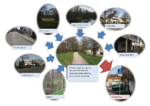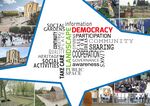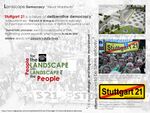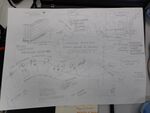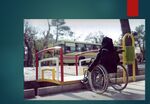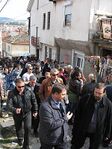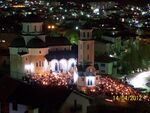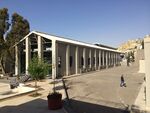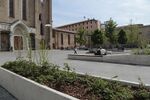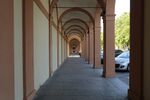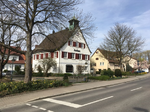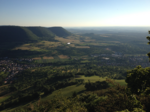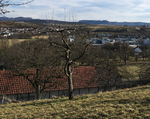LED Online Seminar 2017 - Working Group 12
--> Back to working group overview
Dear working group members. This is your group page and you will be completing the template gradually as we move through the seminar. Good luck and enjoy your collaboration!
Assignment 1 - Reading and Synthesizing Core Terminology
- You can read more details about this assignment here
- Readings are accessible via the resources page
Step 1: Your Landscape Democracy Manifestoes
Step 2: Define your readings
- Please add your readings selection for the terminology exercise before April 12:
A: Landscape and Democracy - Mapping the Terrain
Landscape Concepts:
- Meinig, D. W. (1979): "The Beholding Eye: Ten Versions of the Same Scene." In: The Interpretation of Ordinary Landscapes: Geographical Essays, edited by D. W. Meinig and John Brinckerhoff Jackson, 33-48. New York: Oxford University Press.
- Kucan, Ana (2007). Constructing Landscape Conceptions. In: ECLAS (ed.). JoLA spring 2007, 30-41. Munich: Callwey. (Martina)
- Dani: European Union (Parliament and Council): Water Framework Directive
B: Concepts of Participation
- Arnstein, Sherry R.(1969): A Ladder of Citizen Participation, JAIP, Vol. 35, No. 4
- Dani: Furco, Andrew (1996): Service-learning: A balanced approach to experiential education
C: Community and Identity
- Welk Von Mossner, Alexa (2014): Cinematic Landscapes, In: Topos, No. 88, 2014.
- Dani: SEISMIC project, An urban research and innovation project across 10 European countries
D: Designing
- Kot, Douglas and Ruggeri, Deni: Westport Case Study
- Dani: Pritzker Prize winning architect Alejandro Aravena on sustainable design and community involvement in Chile
E: Communicating a Vision
- 'Reading the Landscape' by Simon Bell, EMU Tartu
Steps 3 and 4: Concepts Selection and definition
- Each group member selects three relevant concepts derived from his/her readings and synthesize them/publish them on the wiki by April 30, 2017
- Group members reflect within their groups and define their chosen concepts into a shared definition to be posted on the wiki by May 10, 2017.
- Other group members will be able to comment on the definitions until May 20, 2017
Concepts and definitions
Author 1:
Author 2:
- ......
- .......
- .......
Author 3:
- ......
- .......
- .......
Author 4:
- ......
- .......
- .......
Step 5: Reflection
- Please write, as a group, a 250 words reflection on your discourse and document it here
Step 6: Revised manifestoes
- please look again at your initial manifestoes and update them with any new aspects/prespectives you have taken up during this seminar
- Updatedmanifesto1.jpg
xy's updated manifesto
- Updatedmanifesto2.jpg
xy's updated manifesto
- Updatedmanifesto3.jpg
xy's updated manifesto
- Updatedmanifesto4.jpg
xy's updated manifesto
- Updatedmanifesto5.jpg
xy's updated manifesto
Assignment 2 - Your Landscape Symbols
- You can read more details about this assignment here
Landscape Symbols Author 1: Amirhossein Mashayekhifard
- Symbol yourname photovoice4
add a caption (one paragraph max) description of the symbolism, interpretation, as well as geo-location
- Symbol yourname photovoice5
add a caption (one paragraph max) description of the symbolism, interpretation, as well as geo-location
Landscape Symbols Author 2- Memory Landscape
- Symbol yourname photovoice4
add a caption (one paragraph max) description of the symbolism, interpretation, as well as geo-location
- Symbol yourname photovoice5
add a caption (one paragraph max) description of the symbolism, interpretation, as well as geo-location
Landscape Symbols Auther 3: Reem Hamdan
Wadi Rum also known as the Valley of the Moon, is a valley cut into the sandstone and granite rock in southern Jordan. It has been inhabited by many cultures since prehistoric times including the Nabateans. It is inhabited by the Zalabia Bedouins who, working with climbers and trekkers, have made a success of developing eco-adventure tourism. The area is now one of Jordan's most important tourist attractions including camping under the stars, riding Arab horses, hiking and rock-climbing among the massive rock formations. Amman, Jordan 29°35′35″N 35°25′12″E
- Symbol yourname photovoice3
add a caption (one paragraph max) description of the symbolism, interpretation, as well as geo-location
- Symbol yourname photovoice4
add a caption (one paragraph max) description of the symbolism, interpretation, as well as geo-location
- Symbol yourname photovoice5
add a caption (one paragraph max) description of the symbolism, interpretation, as well as geo-location
Landscape Symbols Author 4 - Martina Anelli
Recently renovated, this square is named Piazza San Francesco and it was built in XIII century thanks to St. Francis of Assisi. In the city center of my hometown, Bologna, unfortunately there aren’t many gardens and parks, but they’re replaced by squares, like this one. Especially during spring and summer, this place is crowded with young people and children seated on the floor or on the benches. During some public holidays, concerts and food stands completely fill the square.
The main symbols of my city are definitely the 40 kilometers of porticoes that cover all the historical center. In medieval age, they were built to increase the areas of the apartment over them, and to create a cover for the shops below. Today they are a protection for the people walking through them from the bad weather or the hot sun of the summer, but also from the car’s roads. There are many shops, cafes, restaurants or galleries from one side, but from the other side it’s possible to see how the urban landscape changes during the walk. Porticoes are a network that give to the walker a sense of continuity, protection and identity.
- Symbol yourname photovoice3
add a caption (one paragraph max) description of the symbolism, interpretation, as well as geo-location
- Symbol yourname photovoice4
add a caption (one paragraph max) description of the symbolism, interpretation, as well as geo-location
- Symbol yourname photovoice5
add a caption (one paragraph max) description of the symbolism, interpretation, as well as geo-location
Landscape Symbols Author 5 - Caroline Fischer
Quite typical as well is fruit growing with meadows below. It's a cultural heritage auf the region, as these areas are too steep and wet for regular farming. You can see plantages in all sizes which are close to the towns and used extensively. Mainly apple trees were planted but also cherry and damson trees. Today it is big challenge to maintain these form of usage as the owners get older in order to preserve the various habitats and the history of the landscape.
- Symbol yourname photovoice4
add a caption (one paragraph max) description of the symbolism, interpretation, as well as geo-location
- Symbol yourname photovoice5
add a caption (one paragraph max) description of the symbolism, interpretation, as well as geo-location
Assignment 3 - Role Play on Landscape Democracy "movers and shakers"
- You can read more details about this assignment here
Assignment 4 - Your Landscape Democracy Challenge
- You can read more details about this assignment here
- Each group member will specify a landscape democracy challenge in his/her environment
Landscape Democracy Challenge 1
- Give a title to your challenge
- Yourname challenge 1.jpg
caption: why did you select this case?
- Yourname challenge 2.jpg
caption: what is the issue/conflict (1)
- Yourname challenge 3.jpg
caption: what is the issue/conflict (2)
- Yourname challenge 4.jpg
caption: who are the actors?
Your references:
- ...
- ...
Landscape Democracy Challenge 2
- Give a title to your challenge
- Yourname challenge 1.jpg
caption: why did you select this case?
- Yourname challenge 2.jpg
caption: what is the issue/conflict (1)
- Yourname challenge 3.jpg
caption: what is the issue/conflict (2)
- Yourname challenge 4.jpg
caption: who are the actors?
Your references:
- ...
- ...
Landscape Democracy Challenge 3
- Give a title to your challenge
- Yourname challenge 1.jpg
caption: why did you select this case?
- Yourname challenge 2.jpg
caption: what is the issue/conflict (1)
- Yourname challenge 3.jpg
caption: what is the issue/conflict (2)
- Yourname challenge 4.jpg
caption: who are the actors?
Your references:
- ...
- ...
Landscape Democracy Challenge 4
- Give a title to your challenge
- Yourname challenge 1.jpg
caption: why did you select this case?
- Yourname challenge 2.jpg
caption: what is the issue/conflict (1)
- Yourname challenge 3.jpg
caption: what is the issue/conflict (2)
- Yourname challenge 4.jpg
caption: who are the actors?
Your references:
- ...
- ...
Landscape Democracy Challenge 5
- Give a title to your challenge
- Yourname challenge 1.jpg
caption: why did you select this case?
- Yourname challenge 2.jpg
caption: what is the issue/conflict (1)
- Yourname challenge 3.jpg
caption: what is the issue/conflict (2)
- Yourname challenge 4.jpg
caption: who are the actors?
Your references:
- ...
- ...
Assignment 5 - Your Democratic Change Process
- You can read more details about this assignment here
- After documenting and reflecting on your challenges you will continue jointly with one of these challenges and design a democratic change process
Your Democratic Change Process
- Add the title of your project
- Yourgroupname 2017 powermap.jpg
a power map identifying who is affected by the challenge and who is influencing it
- Yourgroupname 2017 change process (1).jpg
Look at the various methods and tools available and think how they can be applied creatively. Think about the needs of different stakeholder groups - you may need a methodical mix to address them all. Illustrate graphically how these methods/tools might be applied in a short, medium and long-term perspective.
- Yourgroupname 2017 scenario.jpg
a scenario illustrating how these tools can be applied within a short, medium and long term perspective involving the groups you want to address, this should include a process timeline
Reflection
- Evaluate in the group how far your ideas either built on the theoretical frame that has been introduced to you during this seminar or react to this by filling a potential gap (approx 150 words)
Your references
- ....
- ....
- ....
- ....
